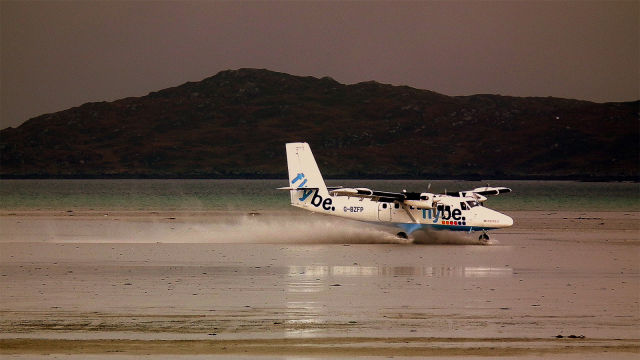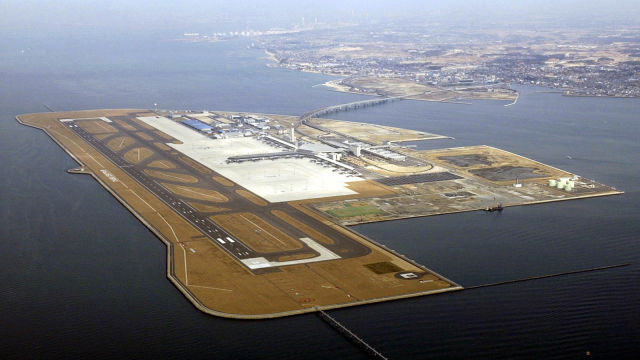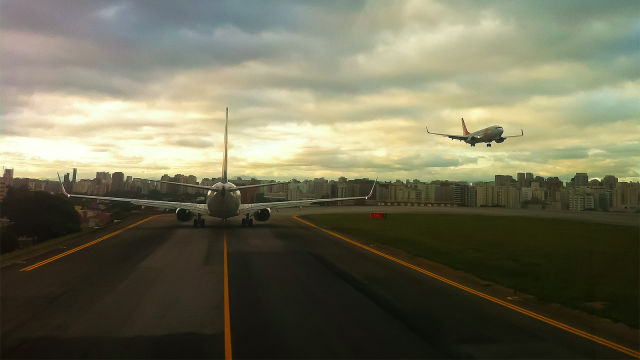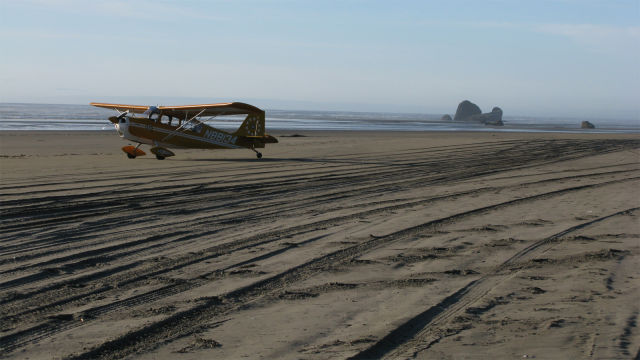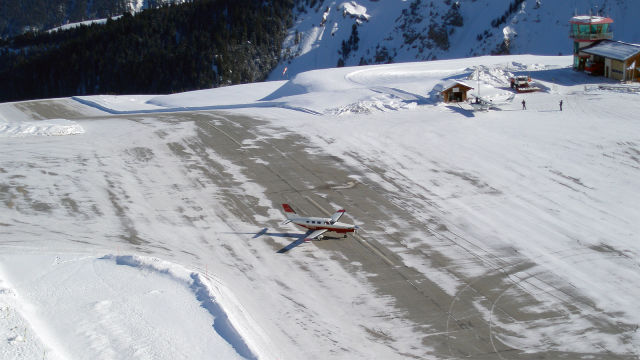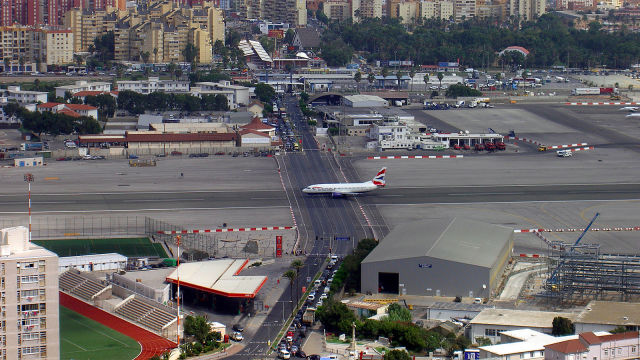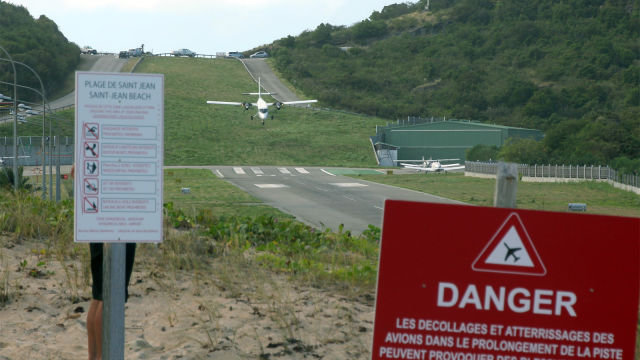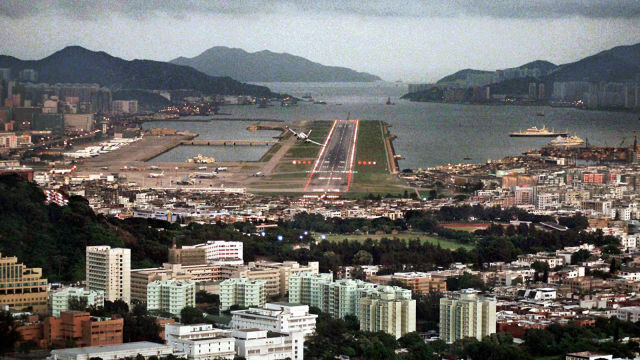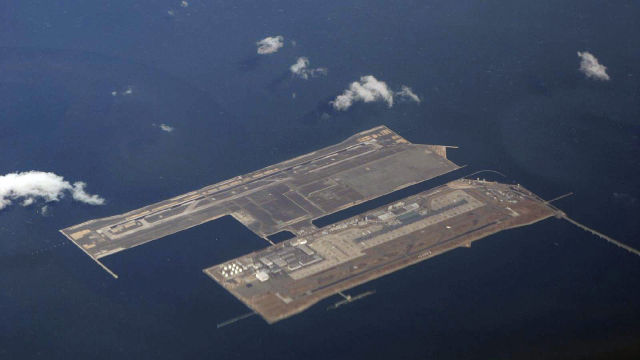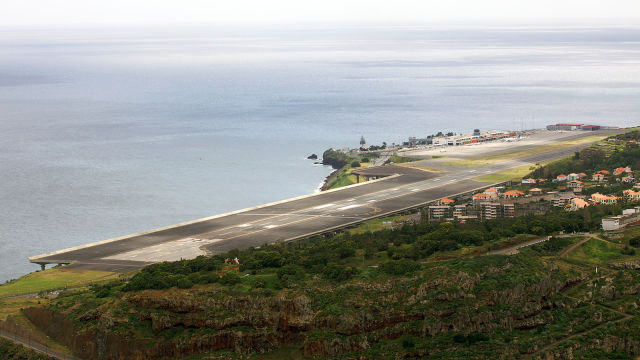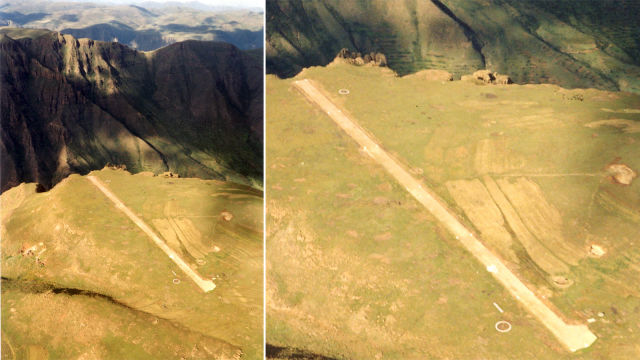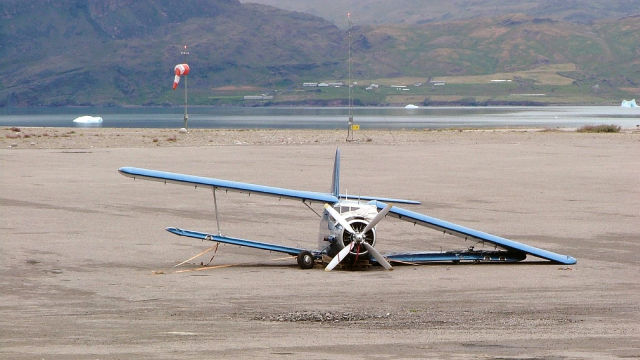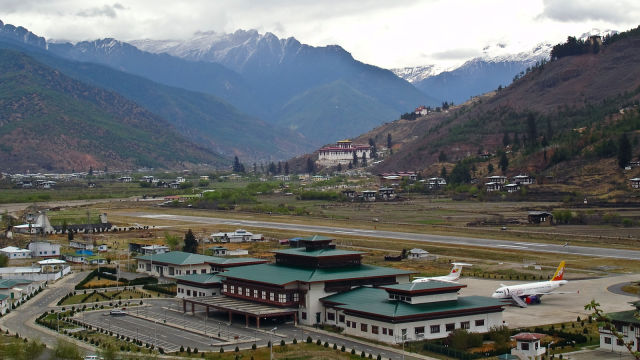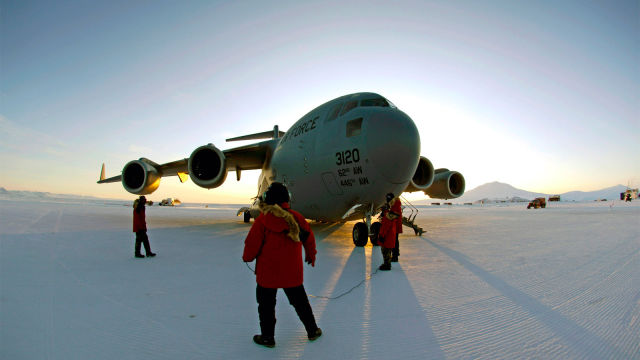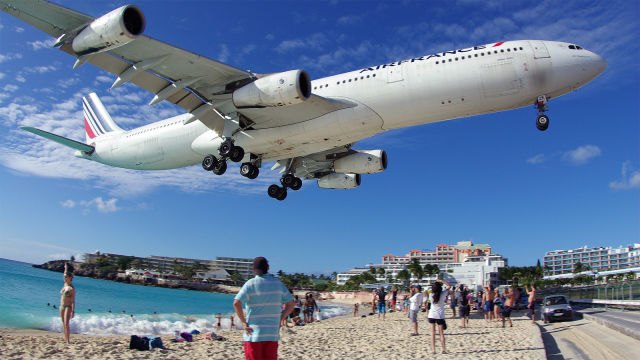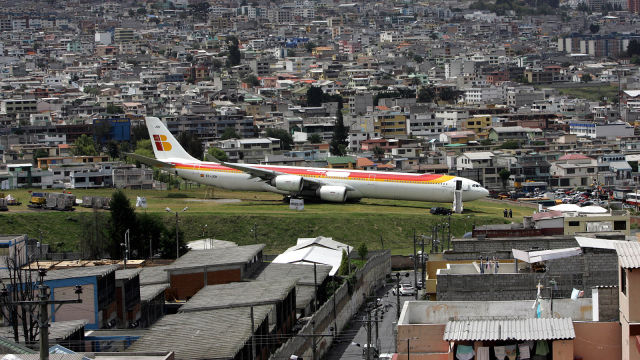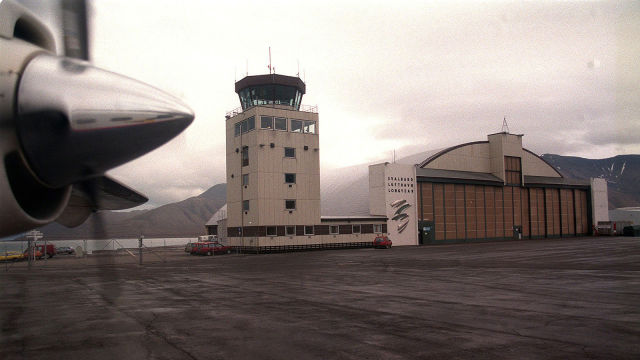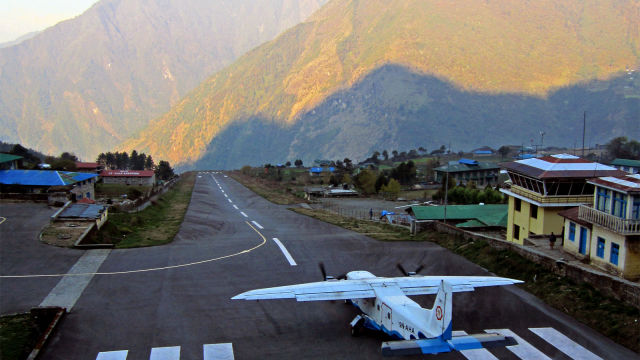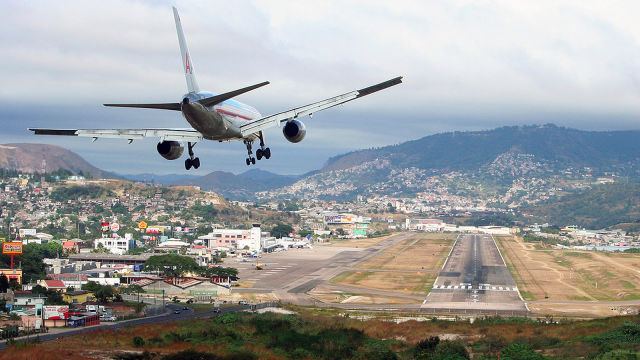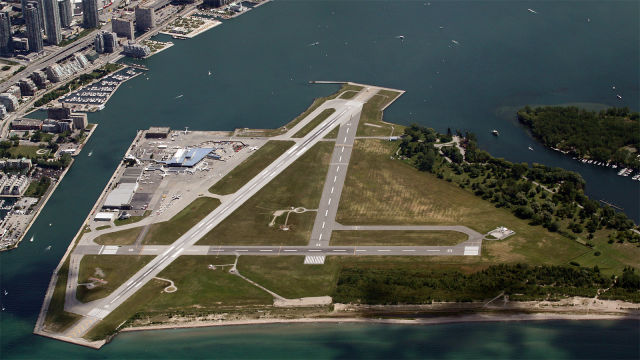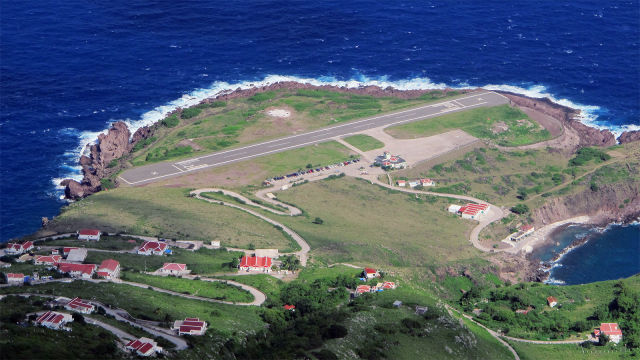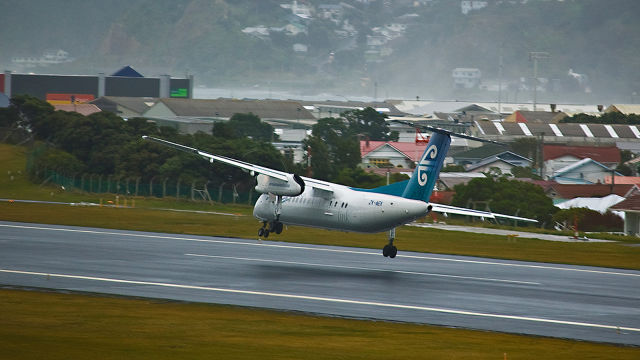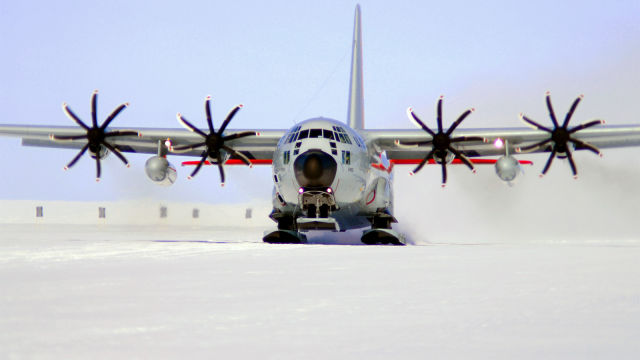Almost 60 percent of aircraft accidents actually occur on the runway at the airport. Here are some terrifying runways that will make you think twice about flying.
Barra Airport, in the Hebrides off the West Coast of Scotland. Yes, it is a beach for take-off and landing. At least it's only for daytime flights.
Water, water, Chubu Centrair International Airport, water, water. (Tokoname, Japan.)
Approaching the Congonhas Airport in the middle of Sao Paulo, Brazil is highly challenging for pilots.
Another risky beach airport: the Copalis State Airport's (Grays Harbor County, Washington) runway is located between the Copalis River delta and a barrier of rocks.
The mountain runway at Courchevel Airport (France) is just 545m long. As if that's not scary enough, it's also got a gradient of 18.5% and a vertical drop at the end.
Gibraltar Airport is located between a bustling city and a crashtastic mountain. Moreover, its 1800m long (short) runway intersects the Winston Churchill Avenue, Gibraltar's busiest road, which has to be closed every time a plane lands or departs.
This is the Gustaf III Airport aka Saint Barthélemy Airport on the Caribbean island of Saint Barthélemy. The short airstrip starts with a slope and ends on the beach.
Kai Tak International Airport, famous and hated for its heart-stopping approach low over Hong Kong, ended its 73-year reign of terror in 1998.
Kansai International Airport, Osaka, Japan. Approaching this feels like your pilot is about to land on water.
Between mountains and the Atlantic Ocean, on the island cliffs, waits the frightening Madeira Airport (Portugal).
Look at the horrifying Matekane Air Strip in Lesotho (Africa). 400m, and then nothing.
Narsarsuaq Airport, Greenland. Severe turbulences and winds from the surrounding fjords make this airport a hard task for pilots. Only daytime take-offs and landings allowed, thankfully.
Paro International Airport, the home of the Royal Bhutan Airlines, is located at an altitude of 2236m and surrounded by over 5000m-high-peaks of the Himalayas. Night or foggy landings are strictly prohibited.
Pegasus White Ice Runway, Antarctica, the southernmost of three airfields serving McMurdo Station. Believe it or not, aircraft take off and land here all year long.
Because of the short (2300m) runway at Princess Juliana International Airport (St. Maarten), large planes fly right over the tourists' head on Maho Beach. It's a spectacular sight—from the ground.
A densely populated neighborhood, a cramped runway, active volcanoes, and frequent fog make Quito's high-altitude airport a threat for only a little longer; Ecuador's main airport is going to be moved to an agricultural setting 12 miles (20km) northeast of the city.
Svalbard Airport in Longyearbyen on the Norwegian archipelago Svalbard in the Barents Sea was built upon a layer of permafrost in 1975. Continuous repaving makes it a hard landing place, literally and figuratively.
The Tenzing-Hillary Airport (Lukla, Nepal) is located 2860m above sea level, and its runway is only a few hundred meters long.
Toncontín International Airport has an extremely short runway—and a mountainous surrounding—in Honduras.
Toronto Islands Airport (Ontairo, Canada) is another pinpoint landing site. And there's a nude beach close to the runway, which I'm sure isn't the least bit distracting.
Juancho E. Yrausquin Airport, Saba. This Caribbean landing site is surrounded by high hills, and both ends of the runway drop into the sea.
Wellington, New Zealand: short runway, hilly landscape, strong crosswinds, turbulent landings.
Williams Field, Antarctica, has two snow runways limited to ski-equipped aircraft during the summer season. Airplanes land on 8m of compacted snow, lying on top of 80m of ice, floating over 550m of water. Must be a blood-chilling experience.

